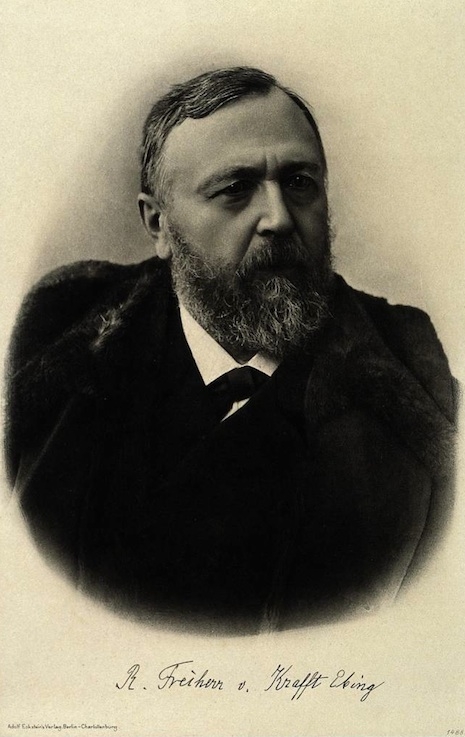
Meanwhile, back at the Krafft-Ebing household.
“Ah, Richard, there you are—where have you been?”
“My dearest, I’ve been out…er…shopping.”
“Shopping? I hope you’ve not been buying any more of those dirty postcards with images of sexual congress and strange and unnatural fetishes.”
“Well, em, yes, as a matter of fact, I have.”
“But darling, you promised...”
“I know, I know, but these images of sexual congress and strange and unnatural fetishes are essential for my scientific research!”
“Your scientific research?”
“Yes, my sweet. These are not merely dirty postcards—these are prime examples of diverse sexual practices, which are essential research for the book I am writing.”
“Oh, I see. Well, I suppose that’s all right then.”
“Yes, it certainly is. Now, if you will kindly excuse me, I must…er…examine these new specimens… in private.”
I am sure it was never like that, but then again who knows? As Richard Freiherr von Krafft-Ebing (1840-1902) certainly did have a fine excuse for collecting “French postcards” and assorted erotica during his lifetime. This Austro-German psychiatrist took a keen interest in all aspects of human sexual behavior and wrote an early pioneering book on the subject called Psychopathia Sexualis in 1886. This tome was intended as “a medico-forensic study,” a kind of reference book to be used by psychiatrists or as he described it: “men engaged in serious study in the domains of natural philosophy and medical jurisprudence.” Krafft-Ebing’s study popularized the terms “sadism,” “masochism” and “fetishism,” and was the first medical science book to examine homosexuality, bi-sexuality, necrophilia, pederasty, coprophilia, bestiality, transvestism, and exhibitionism.
However, some of his ideas reflected the mores of the day rather than objective scientific investigation—for example, he considered any non-procreational sex as “a perversion of the sex drive.”
“With opportunity for the natural satisfaction of the sexual instinct, every expression of it that does not correspond with the purpose of nature,—i.e., propagation,—must be regarded as perverse.”
He also thought homosexuality was an “inversion of the brain” caused during pregnancy. So he was far more vanilla than his personal collection of erotica might suggest.
Psychopathia Sexualis was of major importance in its day—but was quickly superseded by the work of an Austrian neurologist, the cocaine-injecting Sigmund Freud, whose studies into sex, dreams and human behavior made him the father of psychoanalysis.
This rather small selection of postcards and photographs is (apparently) nearly all that remains of Krafft-Ebing’s personal collection of erotica. The images deal with transvestism, with some reference to S&M, and mainly feature one particular individual. It is unknown who any of the people are, though two are rather fun examples of the infamous dirty or “French” postcard, which were popular across Europe from the 1880s onward.
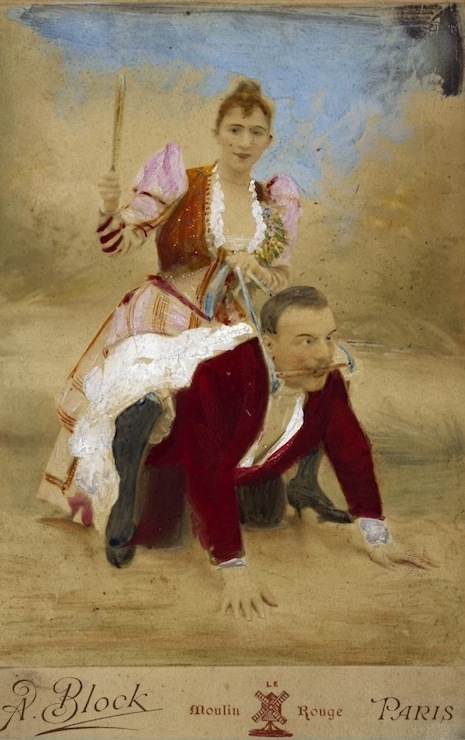
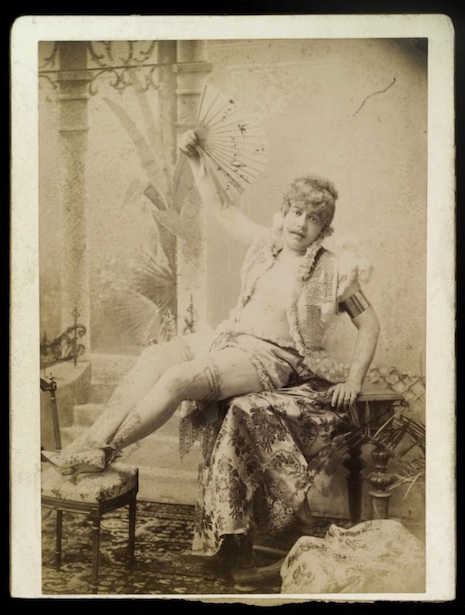


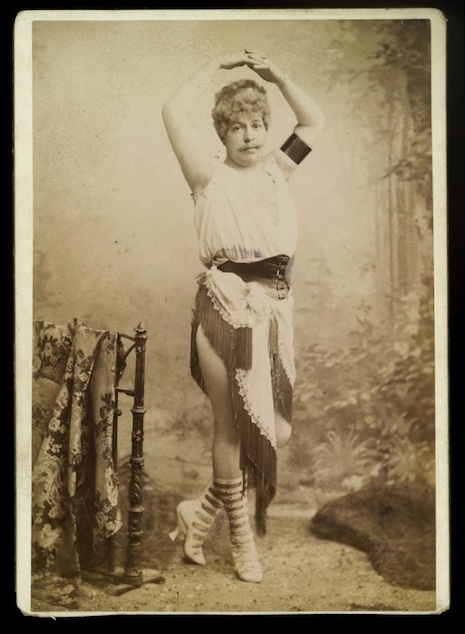
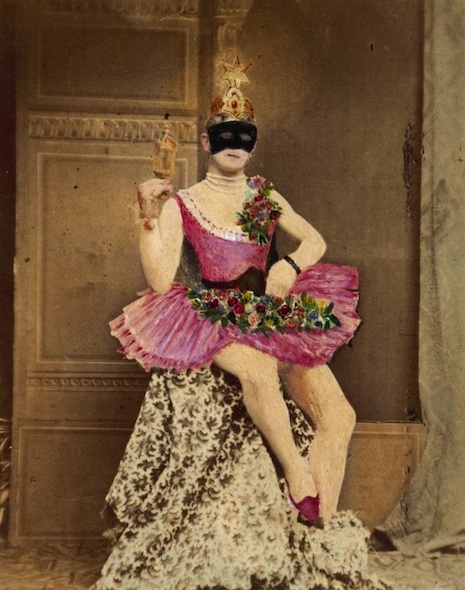
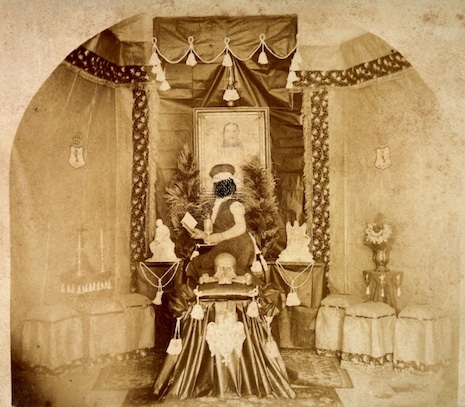
Via Flashbak and Public Domain Review.